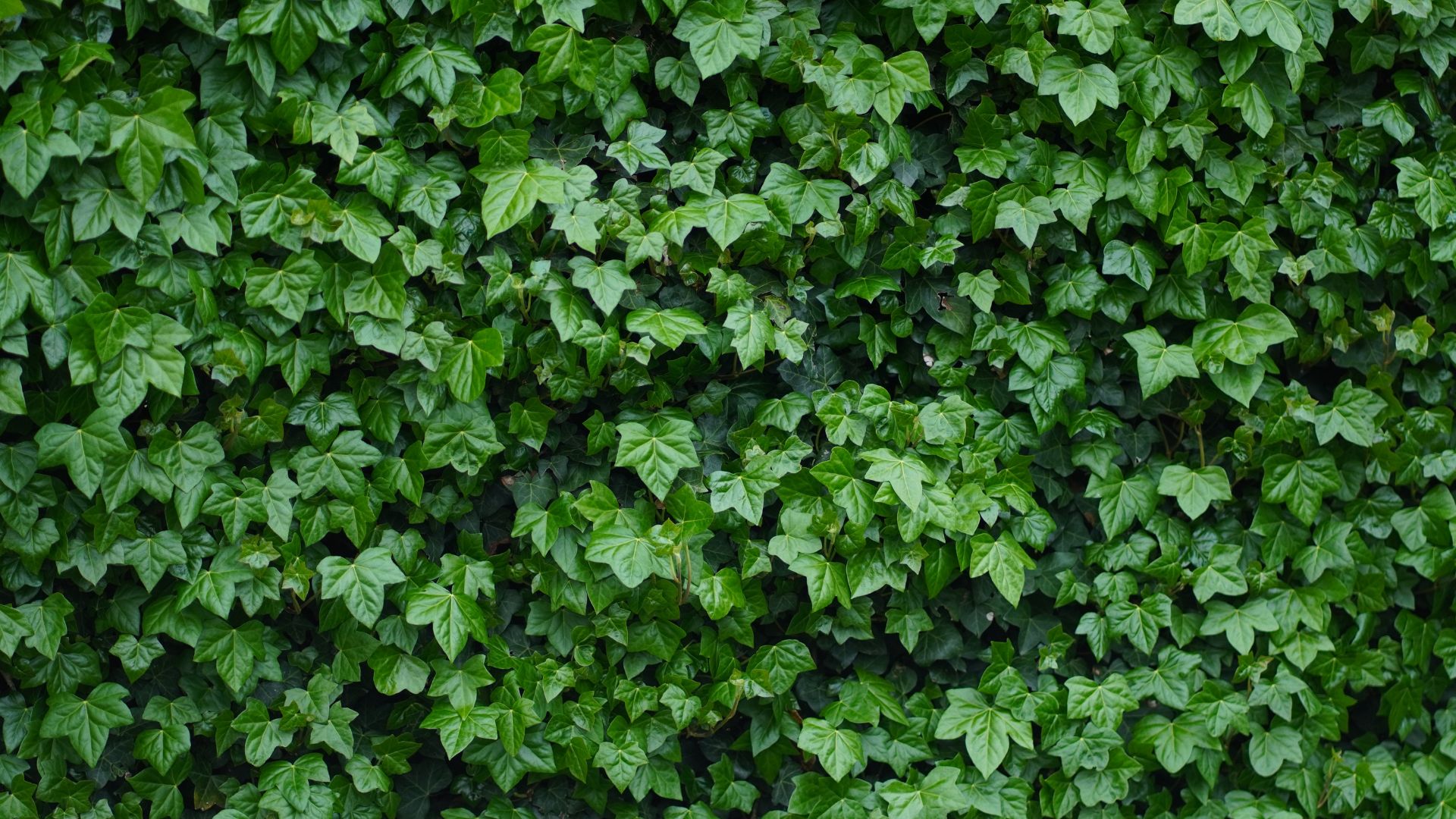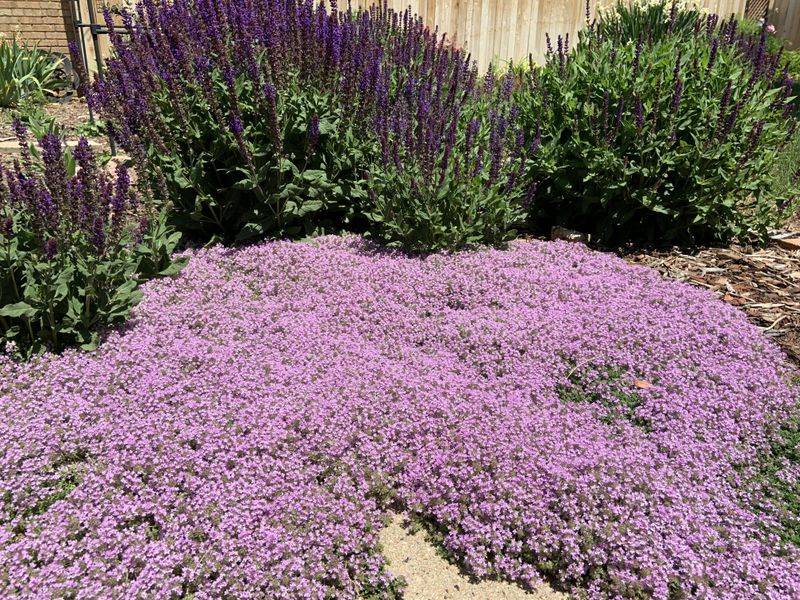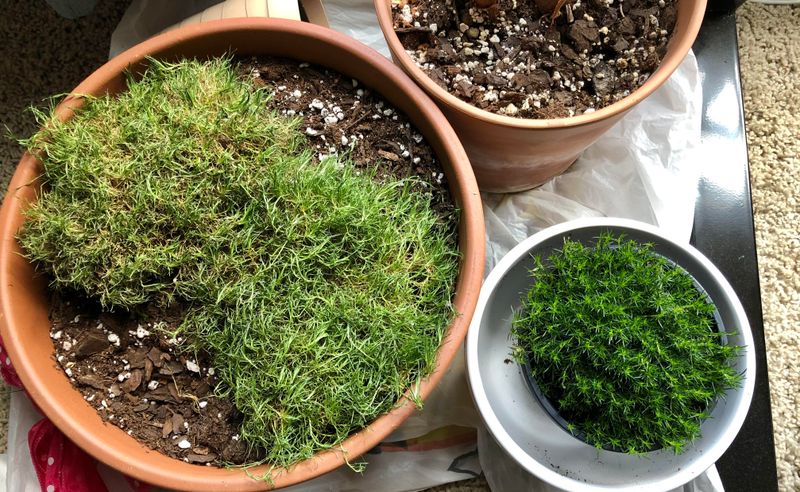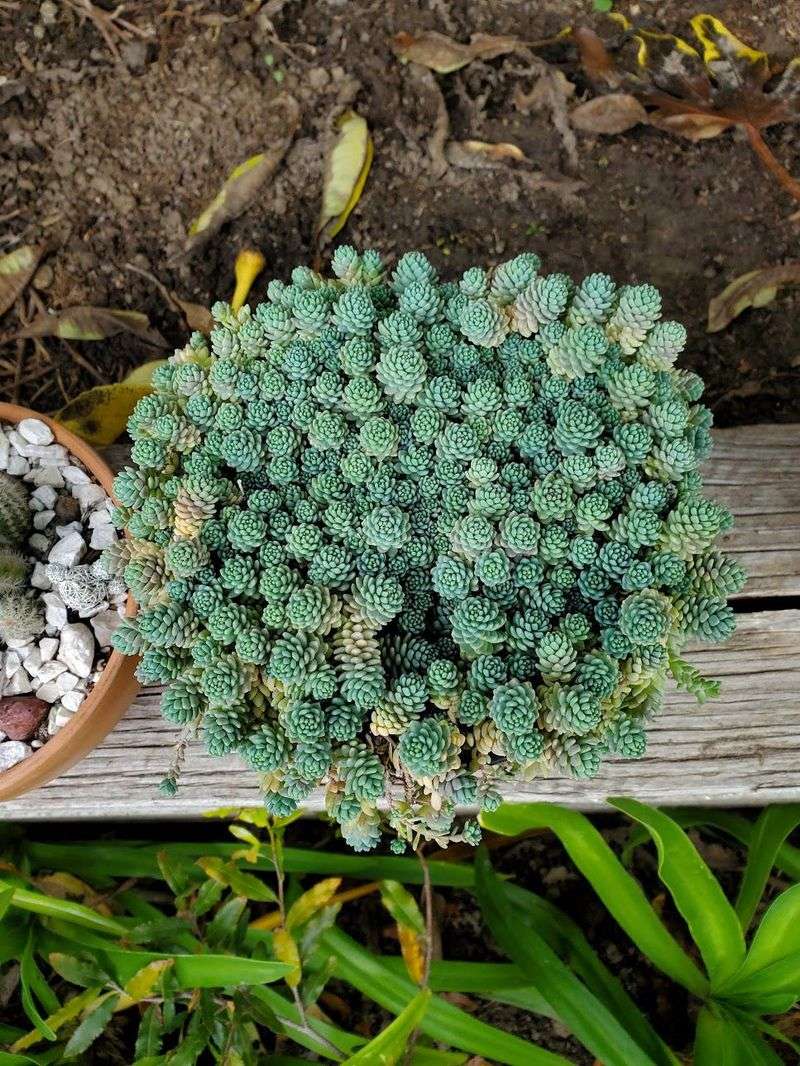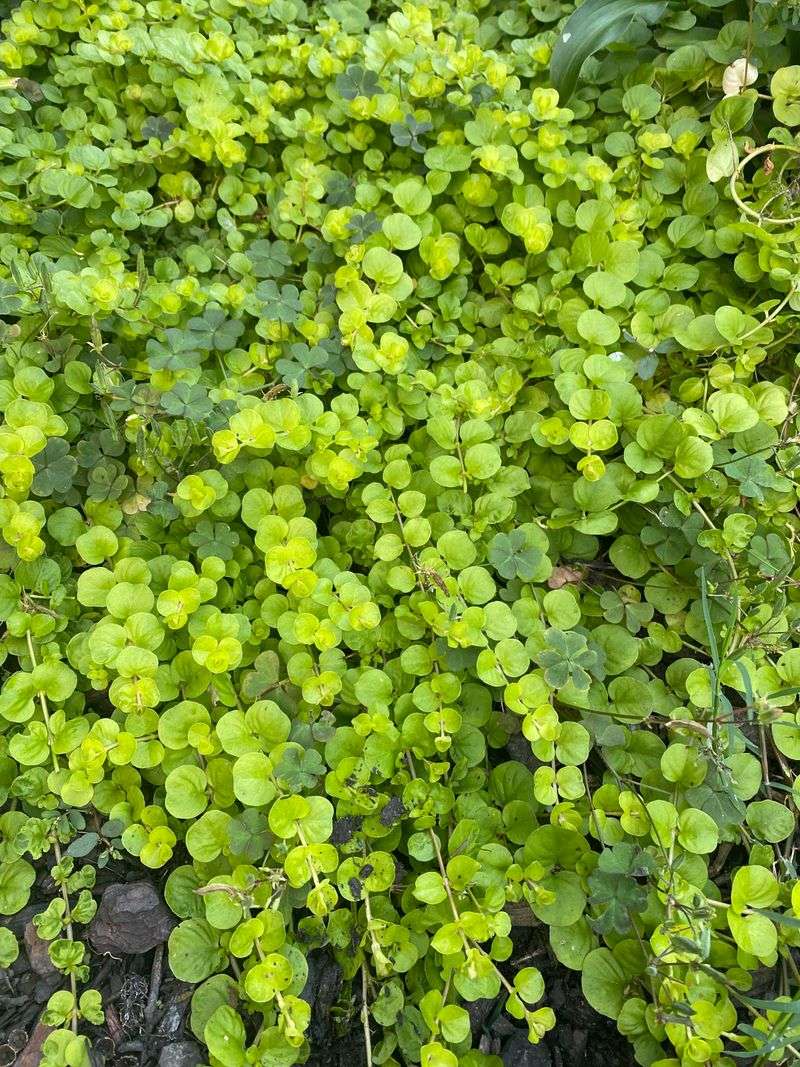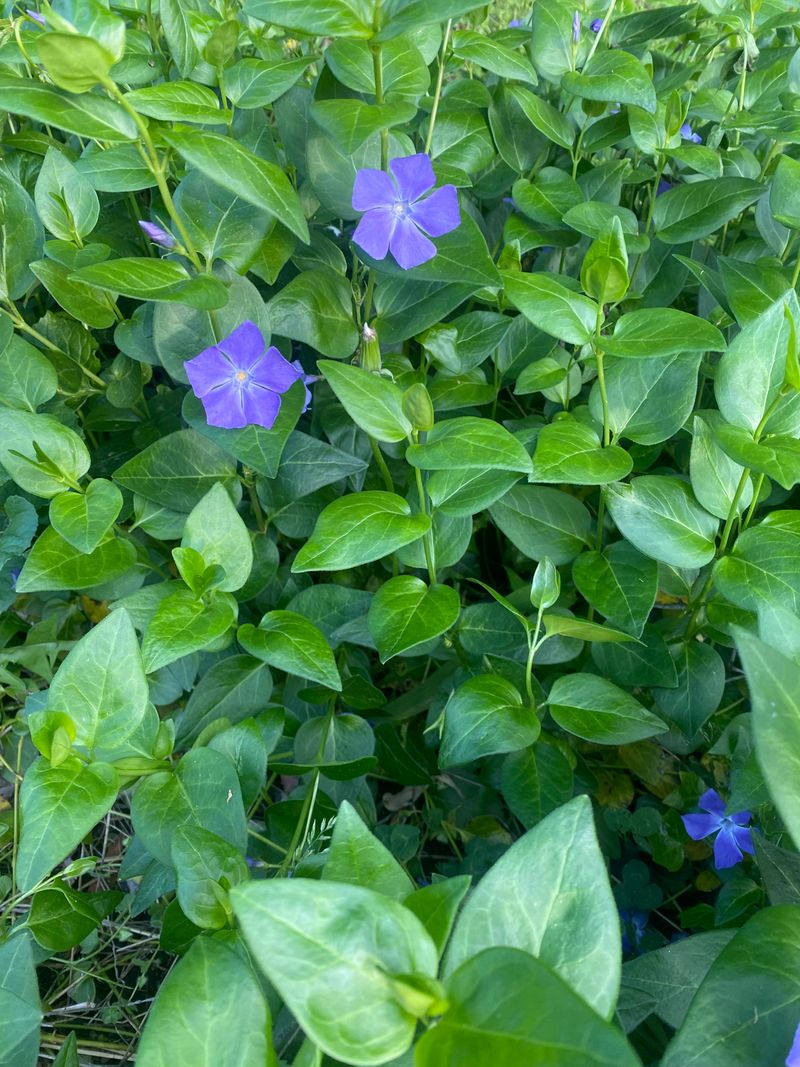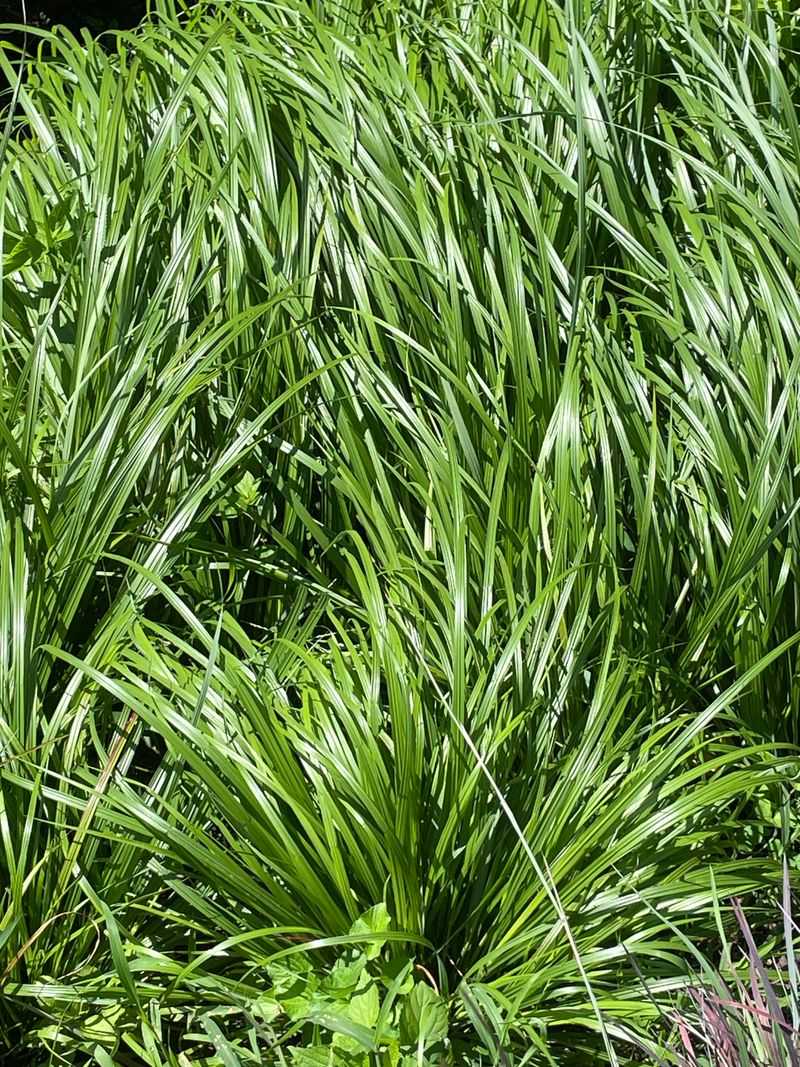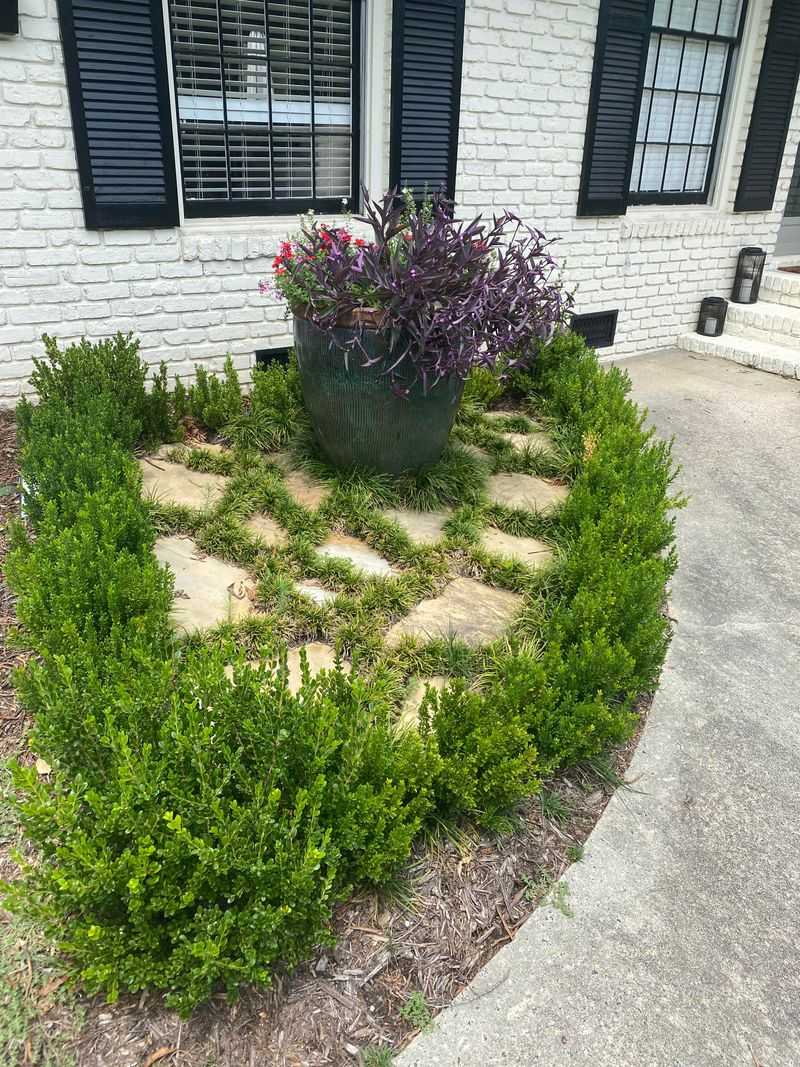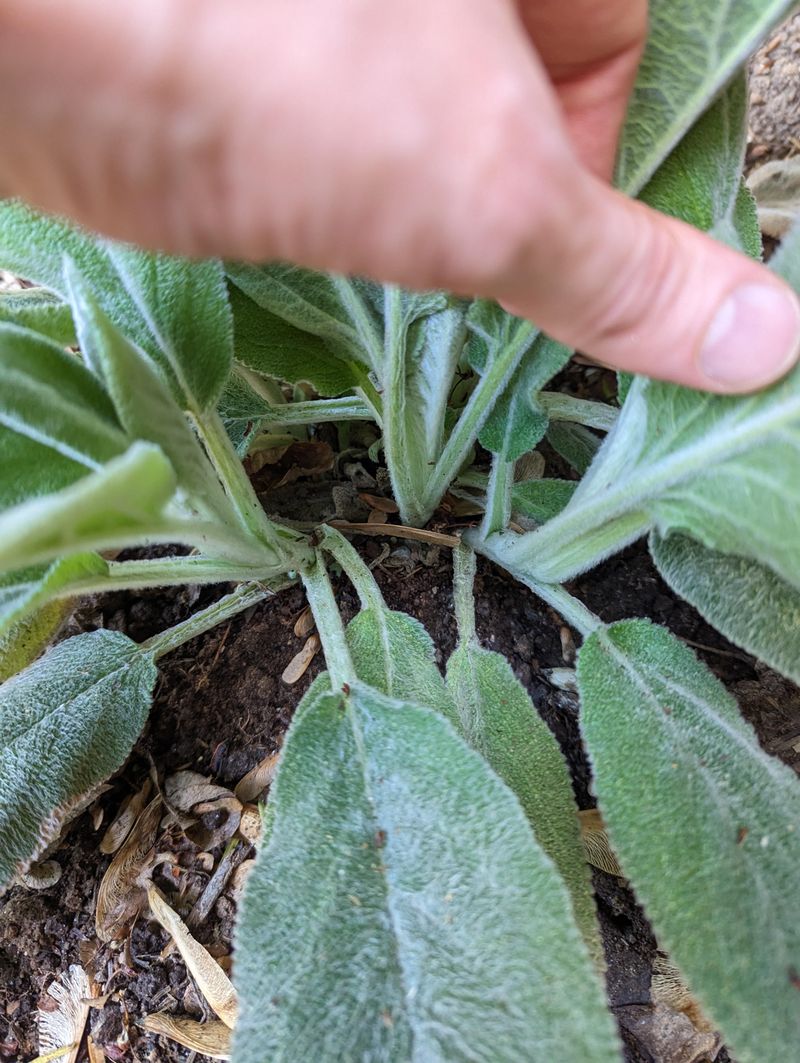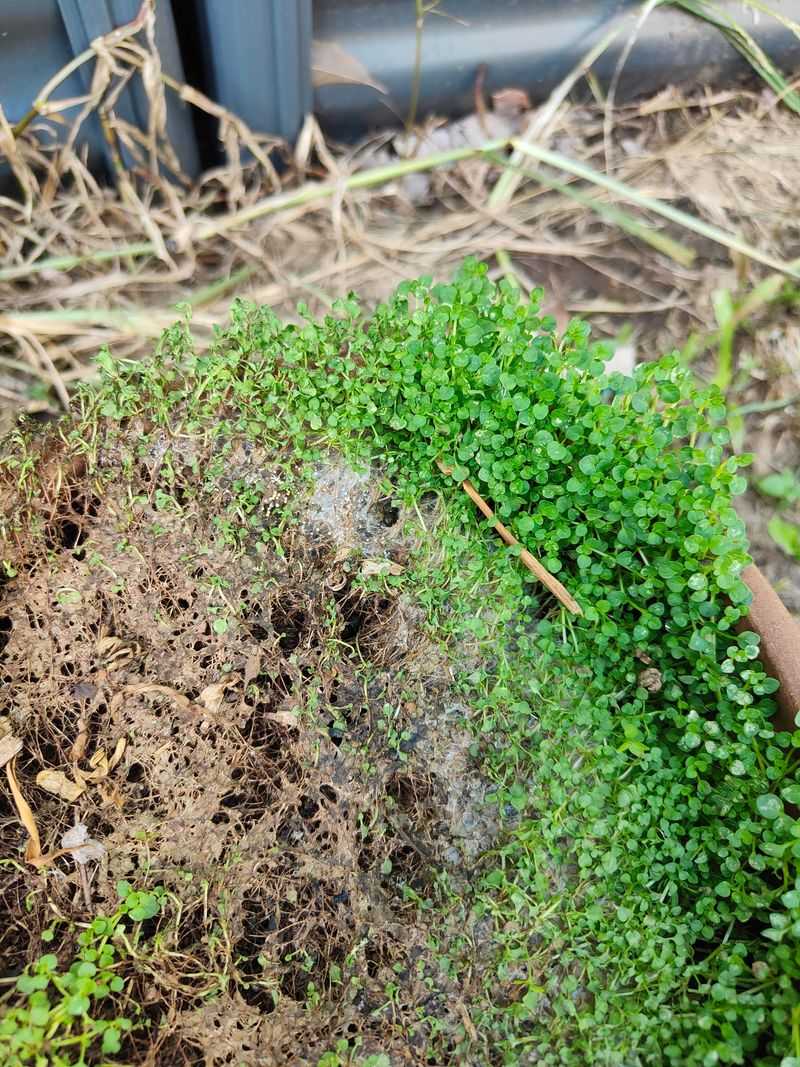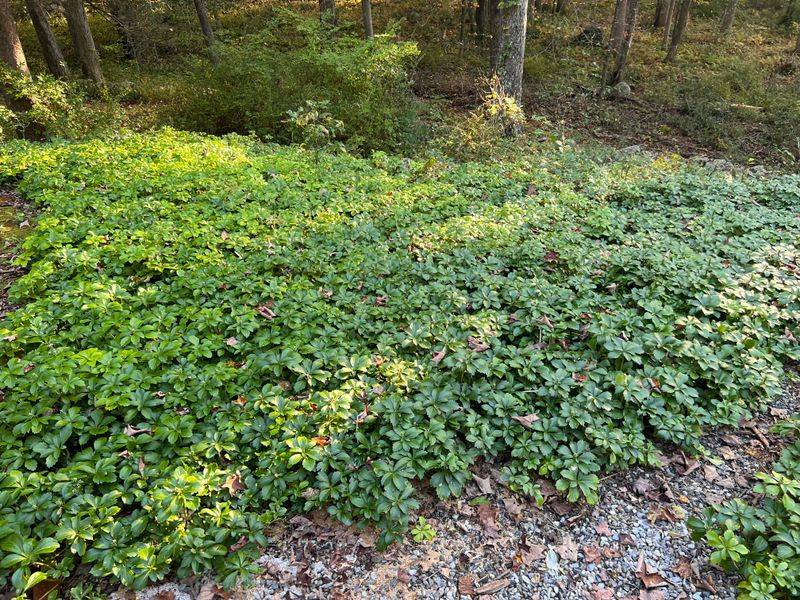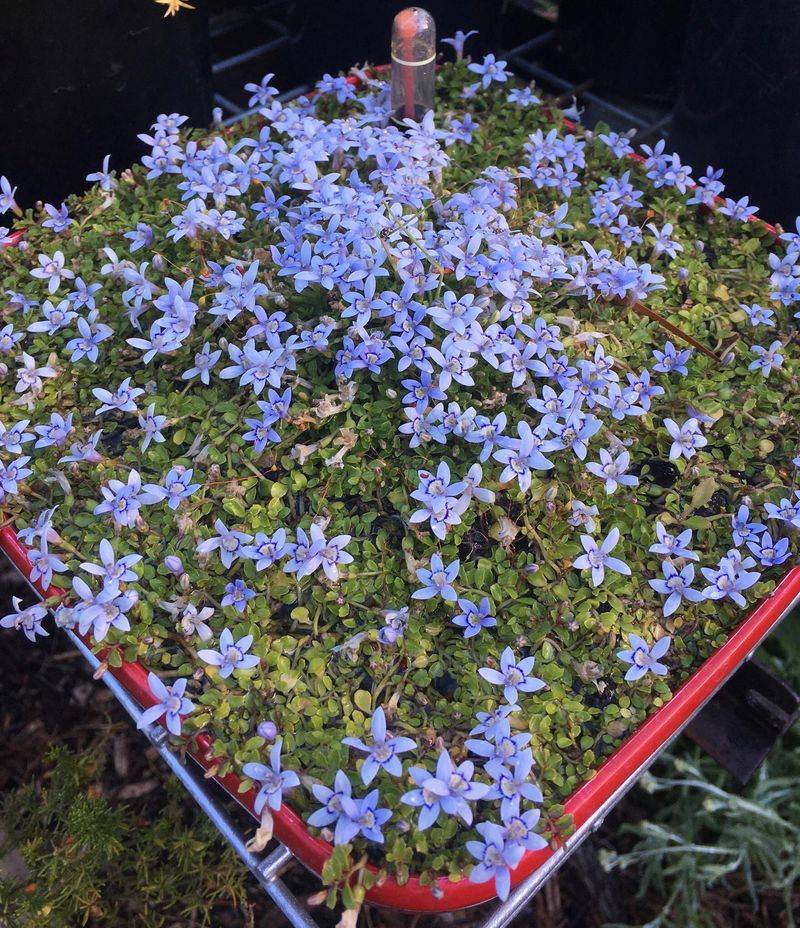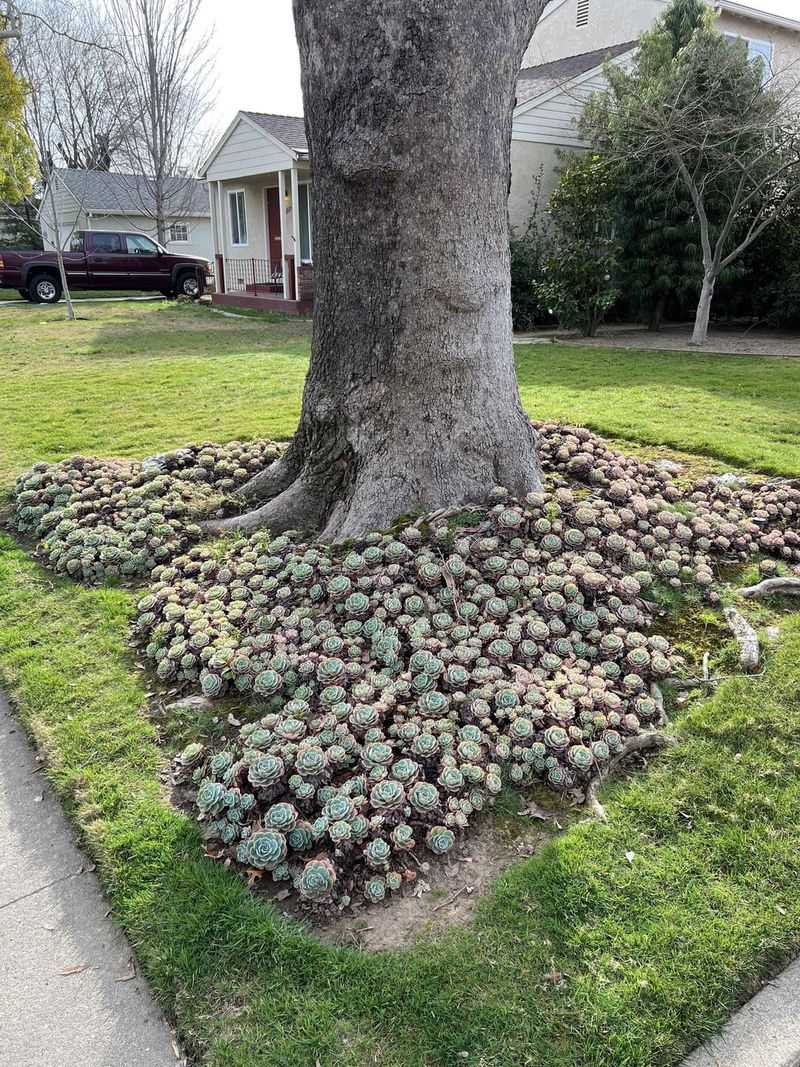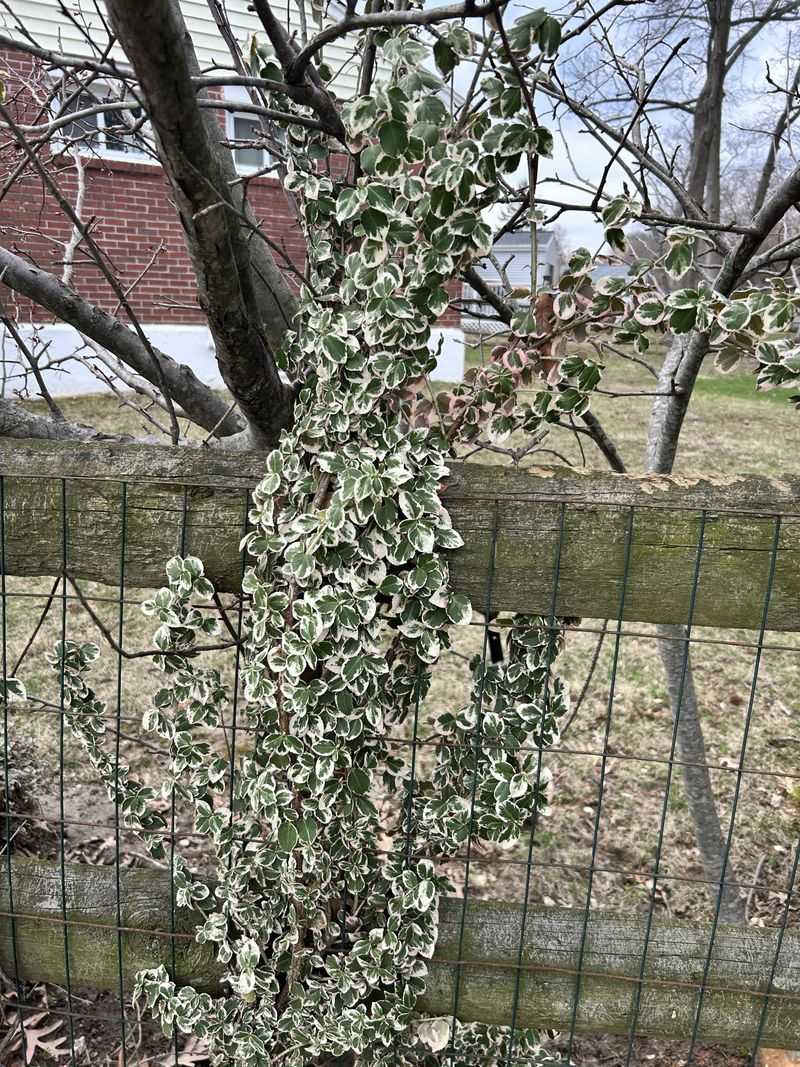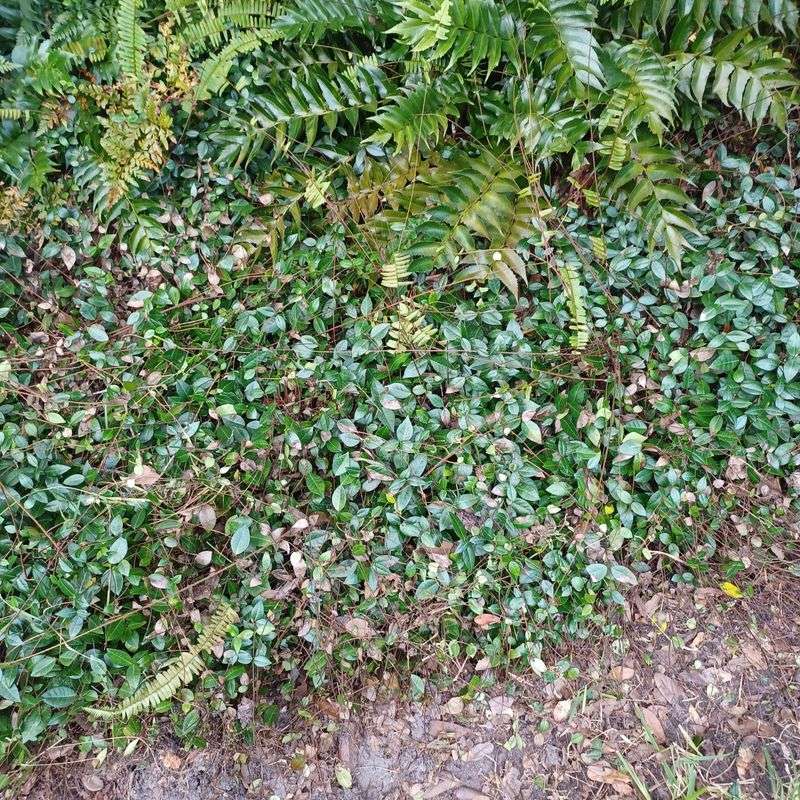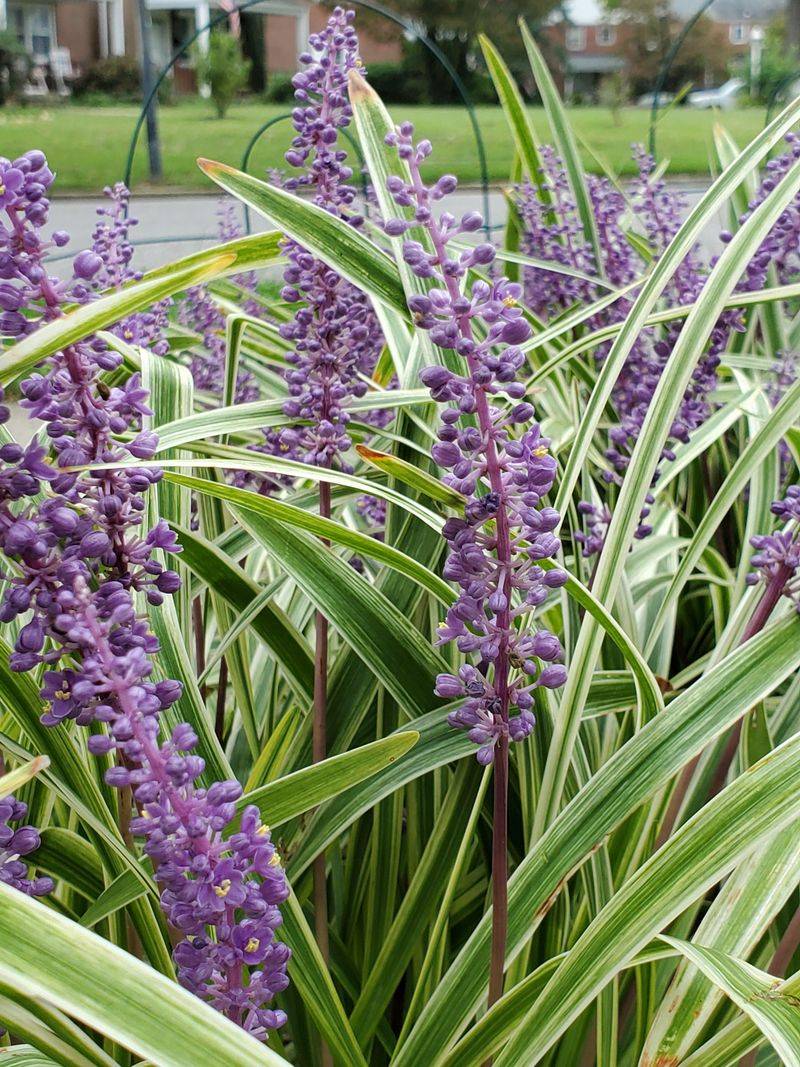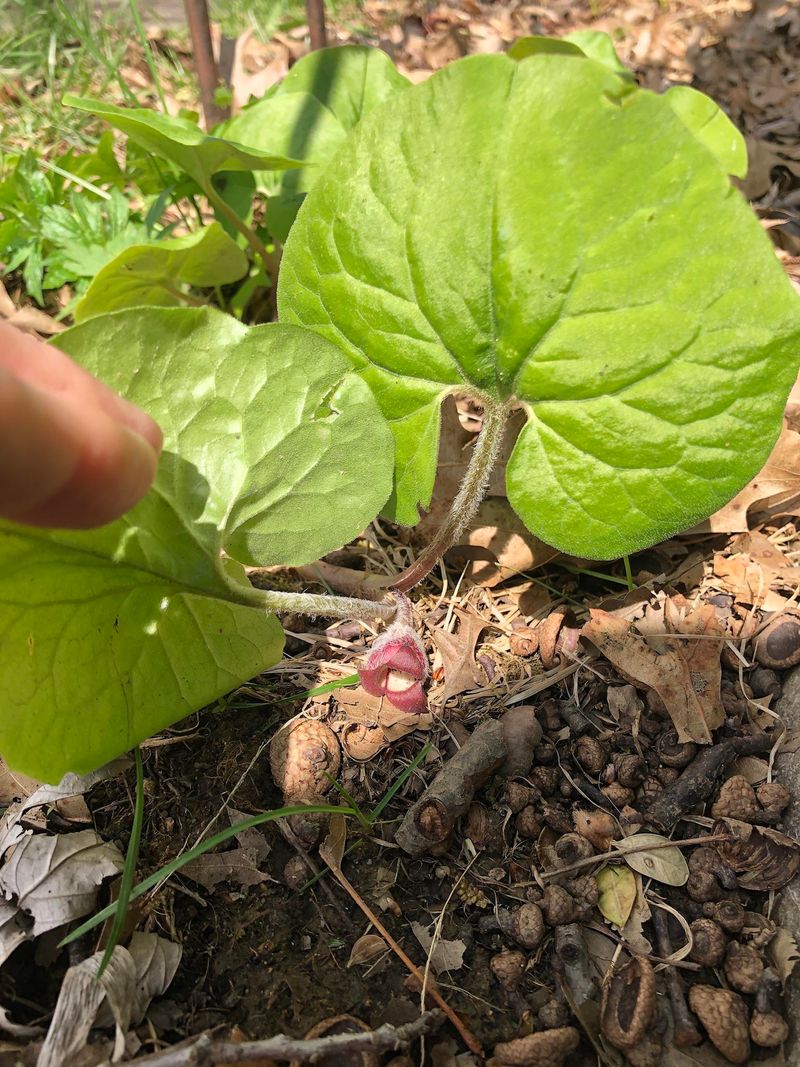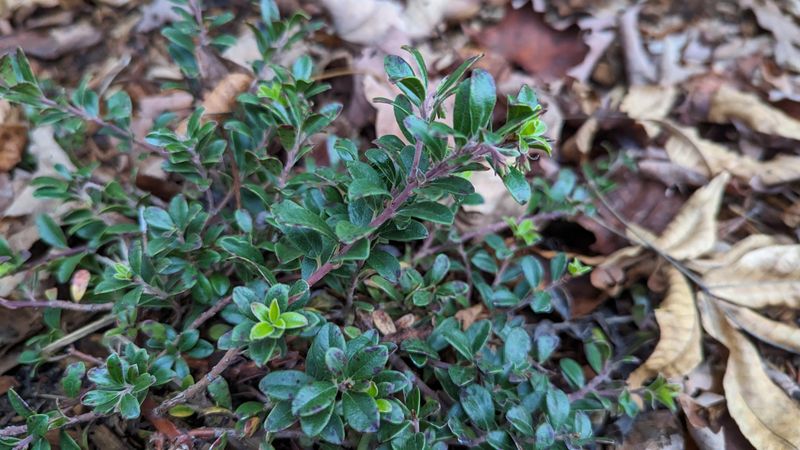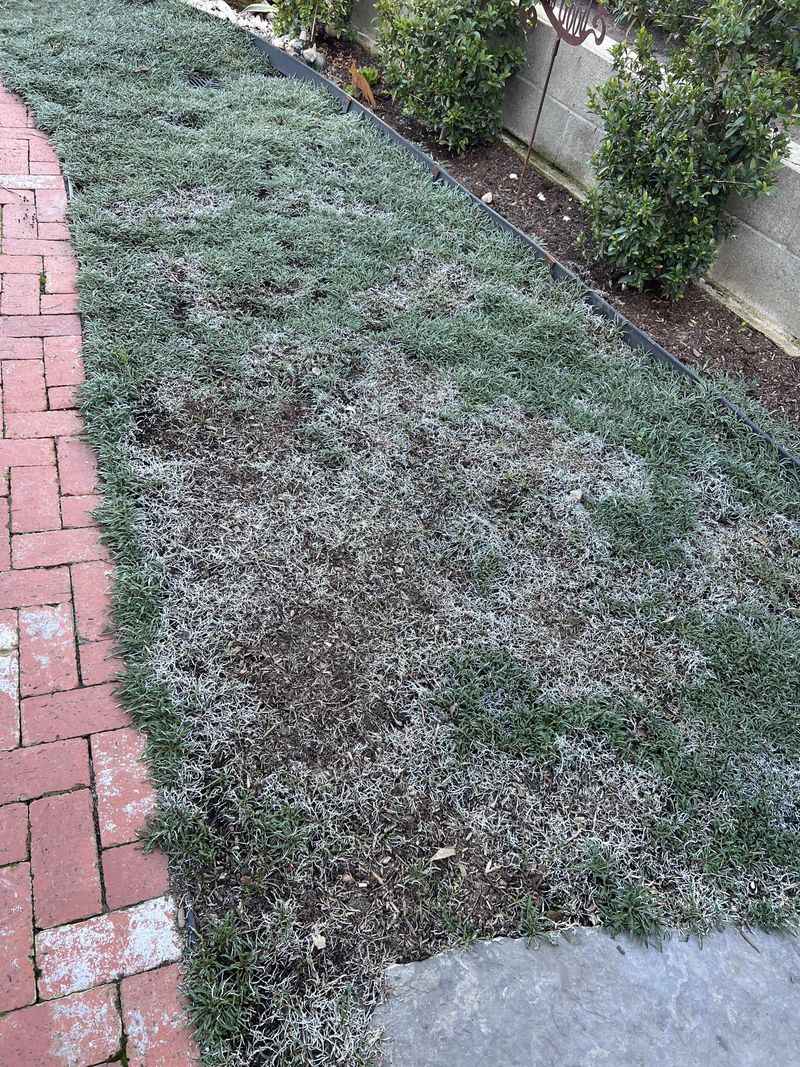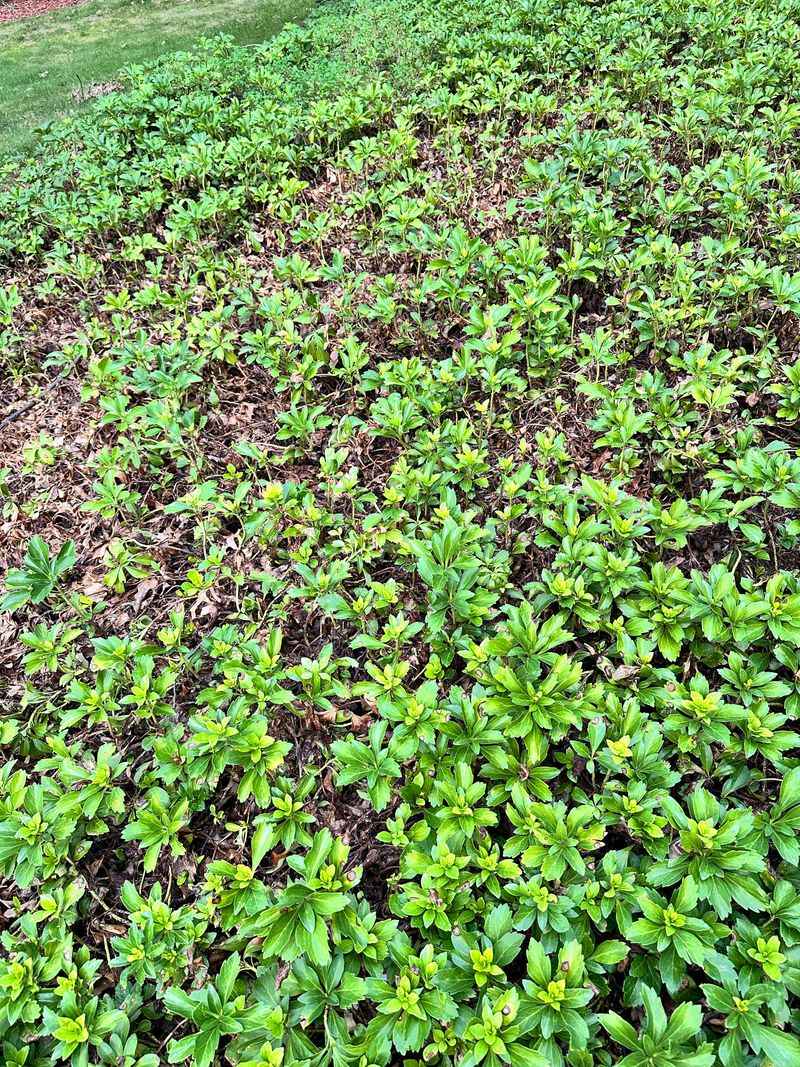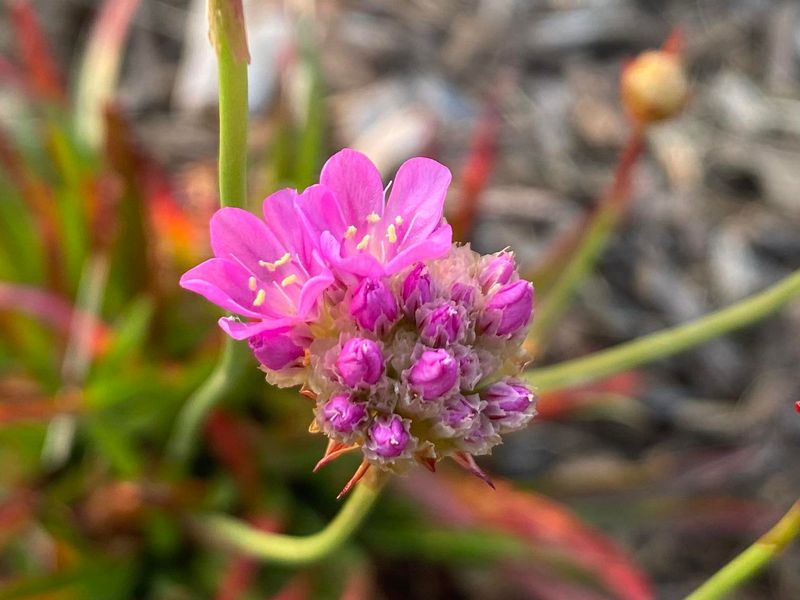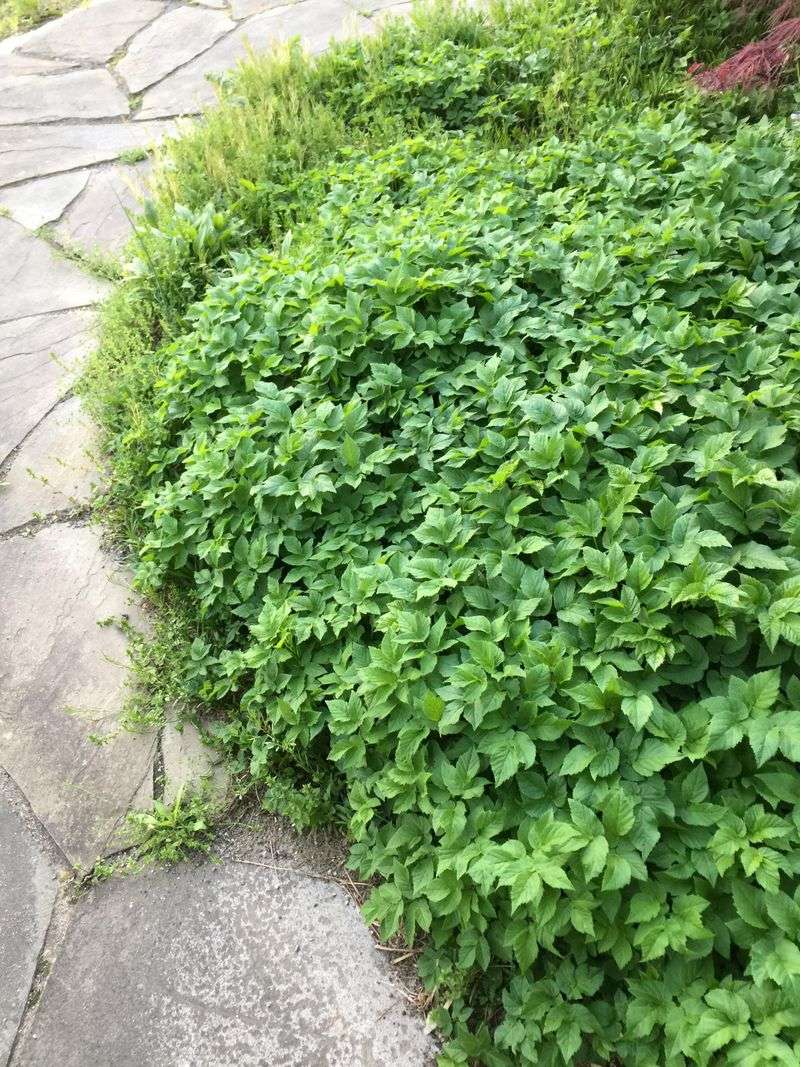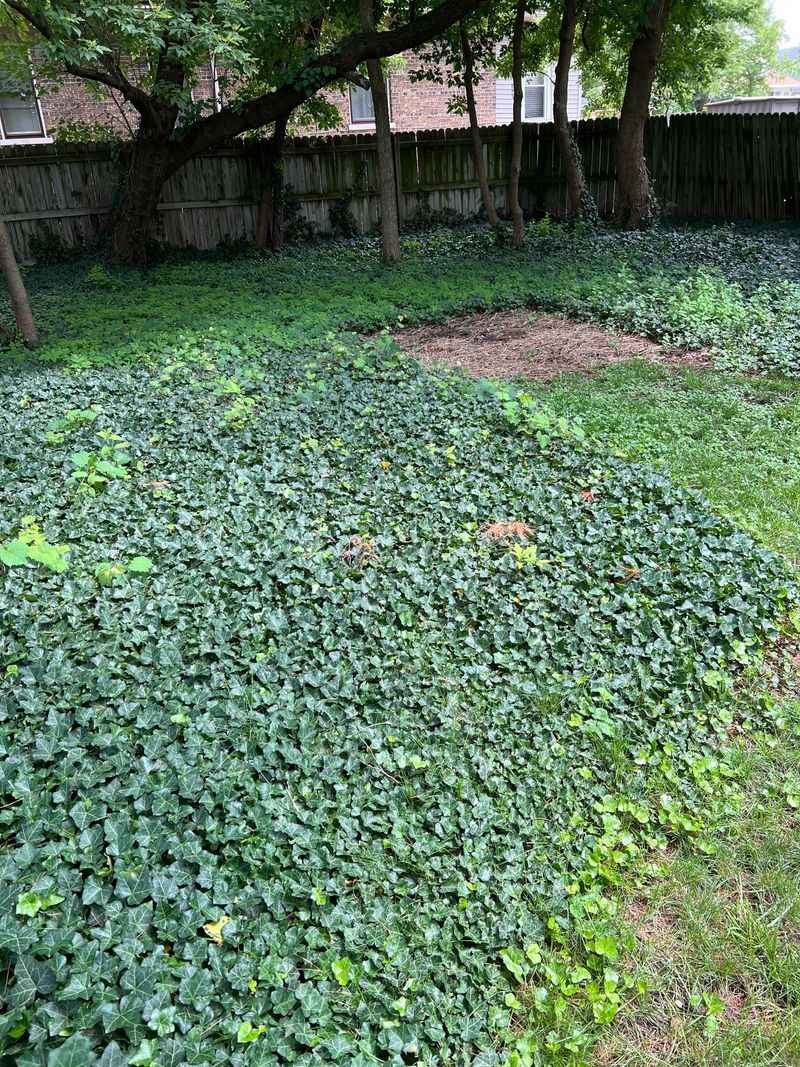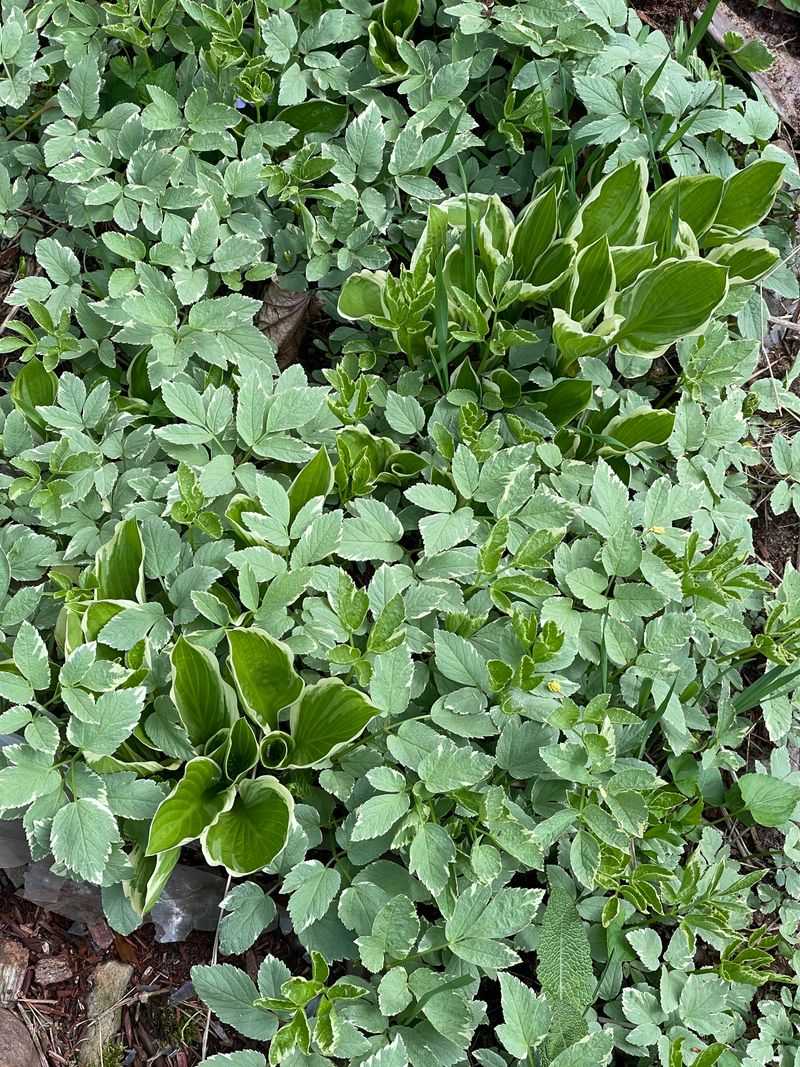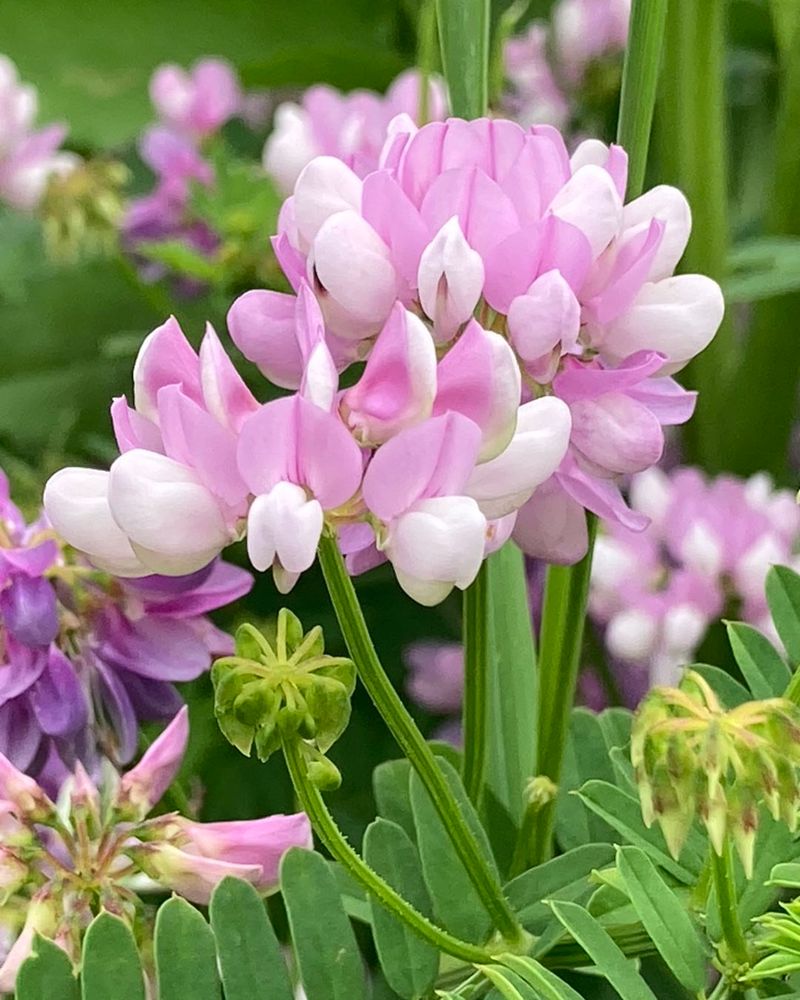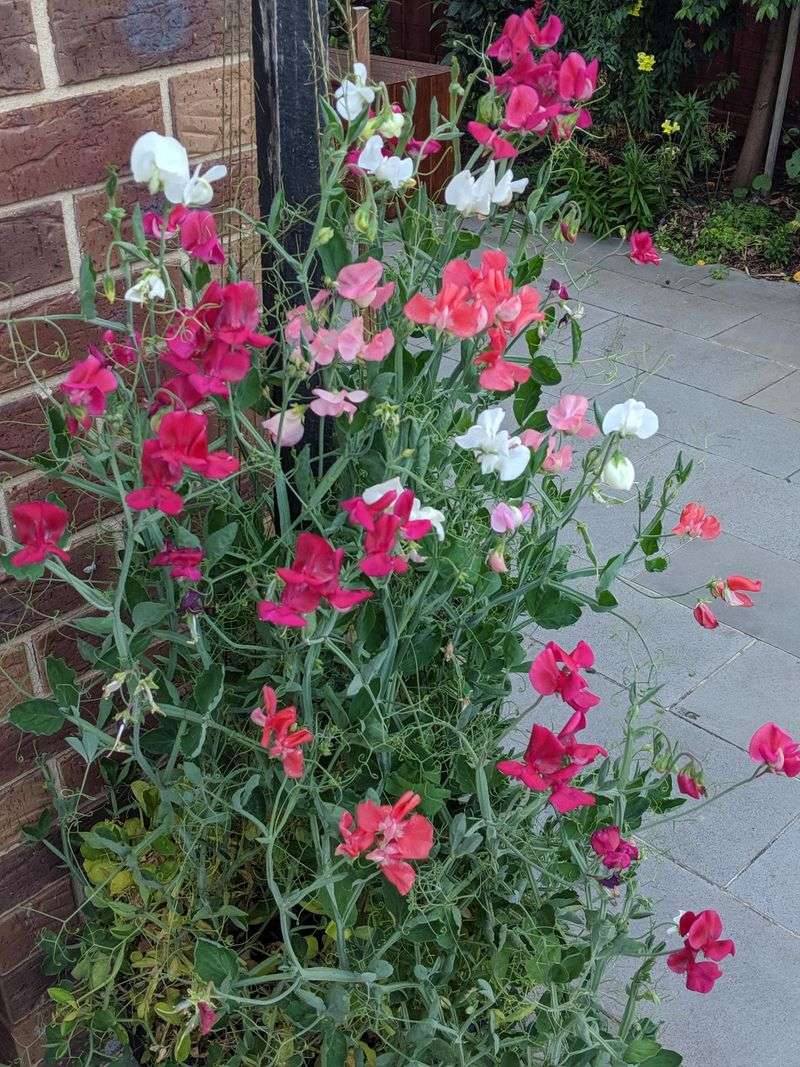When it comes to covering ground, not all plants are created equal. Ground cover plants are the heroes of landscaping, providing beauty, resilience, and environmental benefits.
I learned this firsthand after battling a stubborn patch of bare soil that refused to cooperate. Until I found the right plant to do the job for me! There’s a ground cover plant perfect for your needs. I’ll share some of the fantastic options, each with its own unique charm and purpose.
So, I hope you are ready for these easygoing, hardworking plants that can transform your landscape with minimal effort!
1. Creeping Thyme
I remember planting this one for the first time, unsure of what to expect. Watching it spread, its tiny purple flowers attracting bees, was a delight.
This plant is not just beautiful but also practical. Its fragrant leaves release a lovely aroma when you walk on it.
Plus, it’s low maintenance, thriving in full sun and well-drained soil. Creeping Thyme is a pollinator’s paradise and a gardener’s dream. Have you ever experienced its charm in your garden?
2. Irish Moss
Imagine walking on a soft, green carpet that cushions your every step. Irish Moss offers this luxurious texture in any landscape.
Its carpet-like appearance is perfect for filling gaps between stepping stones or creating a green border. This plant thrives in shade and partial sun, making it versatile for various garden spots.
Despite its name, Irish Moss isn’t actually a moss but rather a flowering plant that adds gentle beauty. Have you tried using it in your garden design?
3. Sedum
Sedum is one of those plants that hardly asks for attention. It’s drought-tolerant, making it an excellent choice for those who prefer low-maintenance gardens.
With its thick, fleshy leaves, Sedum adds an interesting texture to gardens. It thrives in sunny, dry conditions, and once established, it can withstand neglect.
Perfect for rock gardens, this plant comes in various colors and sizes, offering endless design possibilities. It’s a resilient beauty that’s hard to overlook.
4. Creeping Jenny
This one rapidly covers ground, adding a splash of color. It’s a fast grower, making it ideal for filling large areas quickly.
This plant thrives in both sun and partial shade, offering flexibility in your garden planning. Its trailing stems cascade beautifully over edges, creating a softening effect.
Whether you want to brighten up a dull spot or add a dynamic element to your garden, Creeping Jenny is a fantastic choice.
5. Ajuga (Bugleweed)
One summer, I planted Ajuga in a shady corner of my garden. It took off like wildfire, its rich colors adding life where there was only bare soil before.
Ajuga is fantastic for rapid ground coverage, with beautiful blue flowers that bees love. It thrives in shady spots, which are typically challenging for gardeners.
The glossy leaves and striking flowers bring a pop of color to those darker garden corners. Have you considered adding this to your landscape? It’s a decision you won’t regret.
6. Sweet Woodruff
This one offers delicate beauty with its star-shaped white flowers and whorls of bright green leaves. It’s perfect for shady areas, where it fills in the ground with ease.
This plant’s sweet aroma is reminiscent of freshly cut hay, adding a sensory delight to gardens.
Sweet Woodruff is not just beautiful but also a great companion plant for woodland gardens. Its low-growing habit makes it an excellent choice for underplanting shrubs and trees.
7. Vinca Minor (Periwinkle)
A true garden workhorse, offering evergreen beauty year-round. Its glossy leaves and bright purplish-blue flowers create a striking contrast against the earth.
This plant is ideal for filling in large areas, thriving in both sun and partial shade. Vinca Minor is particularly valued for its ability to grow in challenging spots, such as under trees or on slopes.
It’s a reliable choice for those wanting a green landscape without much fuss.
8. Mondo Grass
Isn’t it wonderful when a plant asks for so little yet offers such a striking appearance? Mondo Grass is just that – a border plant that’s both hardy and attractive.
Its dark, grass-like leaves create a clean, organized look along pathways and garden edges. Mondo Grass thrives in a variety of light conditions, from full sun to shade.
While it doesn’t flower conspicuously, its evergreen nature ensures your garden remains pretty throughout the seasons. Ever considered it for your garden borders?
9. Dwarf Mondo Grass
This one is like the tidy cousin of its full-sized counterpart. It forms a compact, low-growing mat that’s perfect for pathways and between stepping stones.
This plant thrives in partially shaded areas but can handle full sun as well. Its dense, grass-like appearance softens hardscape elements and adds a natural touch.
Whether you’re aiming for a traditional or modern garden, Dwarf Mondo Grass fits seamlessly into any design.
10. Lamb’s Ear
I adore Lamb’s Ear for its unique texture – those soft, velvety leaves are irresistible! I first planted it for its drought resistance, but its silvery foliage quickly won my heart.
Lamb’s Ear thrives in sunny, dry spots, adding a soft, tactile element to gardens. It’s perfect for borders, where its distinctive leaves stand out.
Children love to touch its leaves, making it a fun addition to family gardens. Have you let this plant charm its way into your heart yet?
11. Corsican Mint
This one is a delightful plant for those who love a subtle fragrance in the garden. Its tiny leaves release a minty aroma when touched or walked on, creating a sensory experience.
This plant is perfect for shaded areas, where it forms a soft carpet of green. Corsican Mint is not just for its scent – it’s also visually charming with its petite leaves and occasional purple flowers.
It’s a small but mighty addition to any garden.
12. Pachysandra
Have you ever struggled to find a plant that thrives in deep shade? Pachysandra might be the solution. It’s a shade-loving ground cover that forms a dense, green carpet.
Pachysandra’s shiny leaves add a touch of brightness to darker garden corners. This plant is incredibly low maintenance, making it perfect for those who prefer a hands-off approach to gardening.
Plus, it’s evergreen, ensuring your garden remains lively year-round. Is this your next shade garden solution?
13. Blue Star Creeper
This is one of those plants that surprises you with its resilience. It forms a low-growing mat, covered with tiny, star-shaped blue flowers.
This plant thrives in sunny spots, making it perfect for paths or rock gardens. Blue Star Creeper is excellent for filling gaps, creating a seamless green blanket.
It’s easy to manage and adds a touch of whimsy with its delicate blossoms. If you’re looking for a charming, low-maintenance plant, this might just be it.
14. Hens And Chicks
I’ve always admired Hens and Chicks for their ability to thrive in seemingly impossible conditions. This plant is a true survivor, needing minimal water and maintenance.
Its rosette-shaped succulents are both cute and tough, adding a unique texture to gardens. Hens and Chicks are perfect for rocky areas, where they can nestle among stones. Watching them multiply and spread is a joy.
They’ve turned my once-barren spots into lively, succulent havens. Have you let these hardy gems into your garden yet?
15. Wintercreeper
Wintercreeper is as tough as they come, offering evergreen coverage that stands the test of time. Its variegated leaves, often green and gold, add visual interest.
Wintercreeper thrives in challenging conditions, such as rocky slopes or poor soil. This plant’s robust nature makes it ideal for areas needing erosion control.
It’s a reliable choice for gardeners looking for low-maintenance, year-round beauty in their landscapes.
16. Asiatic Jasmine
This one spreads quickly, covering ground with a dense mat of dark green leaves. It’s a great choice for sunny spots where you need quick coverage.
This plant is incredibly hardy, able to withstand heat and low water conditions once established. Asiatic Jasmine’s low-growing habit makes it perfect for large areas.
It’s a versatile plant that complements a variety of garden styles, offering a classic look with minimal effort.
17. Liriope (Lilyturf)
Liriope, commonly known as Lilyturf, is a grass-like plant that’s perfect for controlling erosion.
It thrives in sunny to partially shaded areas, making it versatile for different garden spots. With its purple flower spikes, Liriope adds a touch of color and interest. This plant is both sturdy and graceful, forming dense clumps that help stabilize soil.
Whether used as a border or ground cover, Liriope offers functionality with an aesthetic appeal.
18. Wild Ginger
I’ve found this one to be a fascinating addition to my garden. Its heart-shaped leaves create a green carpet in shaded areas.
This plant thrives under trees, where many others struggle. It’s a reliable ground cover that adds texture and interest to woodland gardens.
The unique leaves and subtle flowers make Wild Ginger a conversation starter. Have you given this shade-loving plant a try in your landscape?
19. Bearberry
Have you ever considered a plant that not only decorates but feeds wildlife? Bearberry is just that. It thrives in poor soil and rocky areas, making it perfect for challenging spots.
Its small, glossy leaves and bright red berries add visual appeal. The berries are a favorite among birds, adding life to your garden.
This plant is a tough survivor that requires minimal care, perfect for those who appreciate a low-maintenance landscape.
20. Silver Carpet (Dymondia)
This one is tailor-made for hot, dry climates. Its silvery-green leaves create a shimmering effect under the sun.
This plant is excellent for ground coverage, thriving in full sun and well-drained soil. Silver Carpet forms a tight mat, perfect for suppressing weeds. Its resilience and unique foliage make it a standout choice for xeriscaping.
If you’re dealing with a dry, challenging area, this plant might be the silver lining you’ve been searching for.
21. Japanese Spurge
Japanese Spurge offers dense growth and shade tolerance, making it perfect for underplanting trees and shrubs.
Its glossy green leaves form a carpet that adds depth to shaded areas. This plant is a reliable choice for creating a polished, tidy look in gardens. Japanese Spurge’s low-maintenance nature means it requires little attention once established.
It’s an excellent option for those seeking effortless elegance in their landscapes.
22. Thrift (Sea Pink)
Thrift, also known as Sea Pink, has a special place in my heart. Its pink blooms on slender stems bring a coastal charm that’s hard to resist.
This plant thrives in well-drained, sandy soils, making it ideal for coastal gardens. Thrift’s ability to withstand salty winds adds to its appeal.
Watching these cheerful flowers dance in the breeze always brings a smile to my face. Have you let Thrift brighten your garden yet?
23. Bishop’s Weed
This one might look attractive at first, but it’s a plant that quickly overstays its welcome. It spreads aggressively, making it hard to control once established.
Its variegated leaves can suffocate other plants, taking over entire garden areas. While it might fill a space rapidly, it often requires constant management to prevent it from becoming invasive.
Consider carefully before introducing this plant to your garden, as it can become more of a nuisance than a benefit.
24. English Ivy
This is a classic choice for covering walls and fences, but it comes with a warning label.
This plant is highly invasive, often choking out native species and taking over large areas. Its aggressive nature can lead to significant maintenance challenges.
While it adds a green backdrop, English Ivy requires vigilant control to prevent it from becoming a problem. Be cautious with this plant, as its beauty often hides its invasive tendencies.
25. Goutweed
I once made the mistake of planting Goutweed, thinking its variegated leaves would brighten a dull spot.
Little did I know, it would take over everything! Goutweed spreads rapidly, often overpowering other plants in its path. It’s a maintenance nightmare, requiring constant attention to keep it in check.
While it might look pretty initially, the effort needed to control it often outweighs its aesthetic benefits. Have you dealt with this garden invader?
26. Crown Vetch
This one can turn into a gardener’s headache if not managed properly. While it produces pretty pink flowers, its invasive nature means it spreads quickly, suffocating other plants.
Removing Crown Vetch can be challenging, as its deep roots and rapid growth make it persistent. It’s best kept out of garden beds unless you’re prepared to manage it diligently.
Consider other options before allowing this plant to take root in your landscape.
27. Perennial Sweet Pea
Do you ever find yourself drawn to plants that promise beauty but come with a catch? Perennial Sweet Pea is one of those.
Its climbing habit and flowers look lovely at first, but it can quickly become a garden nuisance. Without careful management, it spreads aggressively, overtaking other plants.
While it adds a touch of color, its invasive nature requires constant vigilance. Is the allure of its blooms worth the extra effort? Only you can decide.

